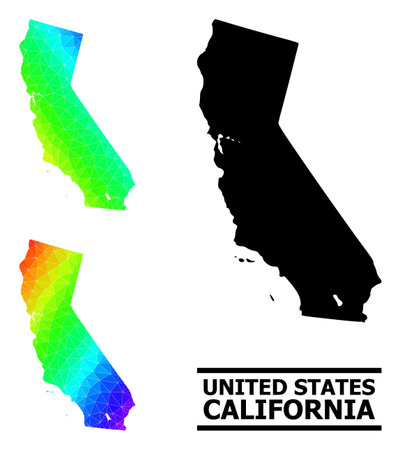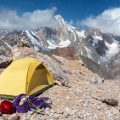1. Introduction to Leave No Trace for Backpackers
When you head out for a backpacking adventure in America’s wild places, you’re stepping into some of the country’s most treasured landscapes—think towering forests, sprawling deserts, and rugged mountain trails. Lightweight backpackers, in particular, are known for carrying only the essentials to travel fast and light. But with this freedom comes a responsibility: making sure that these wild spaces stay pristine for everyone who follows.
The Leave No Trace (LNT) principles are a set of simple guidelines designed to help outdoor lovers minimize their impact on nature. For lightweight backpackers, understanding and following these principles isn’t just good manners—it’s how we protect the trails, forests, and parks that make America unique. Every step we take can either help preserve these places or leave scars that last for years.
Why Leave No Trace Matters for Lightweight Backpackers
Backpacking lightly means you’re moving through nature with as little gear and weight as possible. This style fits perfectly with the spirit of Leave No Trace: tread carefully, pack smart, and leave nothing behind. Here’s why it matters:
| Reason | How It Relates to Lightweight Backpacking |
|---|---|
| Protecting Trails & Campsites | Lighter loads reduce trail wear and tear; careful campsite selection prevents long-term damage. |
| Preserving Wildlife | Packing out all waste and minimizing food scent keeps animals safe and wild. |
| Ensuring Clean Water | Following LNT helps keep streams and lakes free from pollution, benefiting everyone. |
| Setting an Example | Practicing LNT inspires others to follow suit, creating a culture of respect on the trail. |
The Big Picture: Protecting Americas Wild Spaces
America’s public lands belong to all of us. With millions hitting the trails every year, even small impacts add up quickly. By weaving Leave No Trace into every hike and overnight trip, lightweight backpackers become stewards of the land—keeping our wild places beautiful and accessible now and for future generations.
2. Planning and Preparing for Responsible Backcountry Travel
Why Preparation Matters for Lightweight Backpackers
When youre hitting Americas trails with just the essentials, planning ahead is your first step to leaving no trace. A little research and smart packing can help you avoid common problems like getting lost, running into closed trails, or harming delicate environments. Whether you’re hiking the Pacific Crest Trail or camping in a remote corner of the Rockies, preparation sets you up for a safe and eco-friendly adventure.
Key Steps for Low-Impact Trip Planning
| Planning Step | How It Reduces Impact | U.S.-Specific Tips |
|---|---|---|
| Research Trail Regulations | Avoids restricted areas and prevents fines or damage to sensitive sites | Check National Park Service or U.S. Forest Service websites for permits, fire bans, and group size limits |
| Select Appropriate Campsites | Reduces damage to fragile terrain and wildlife habitats | Stick to established campsites or durable surfaces like gravel or dry grass; avoid meadows and cryptobiotic soil in the desert Southwest |
| Plan Meals & Waste Management | Keeps trash out of wild places and discourages wildlife from seeking human food | Bring bear-proof containers in grizzly country; pack out all food scraps and wrappers—“pack it in, pack it out” is the American standard |
| Check Weather & Water Sources | Prevents emergencies that might lead to off-trail travel or resource depletion | Download trail maps with water sources marked; know how to treat water along major U.S. trails (e.g., use filters on the Appalachian Trail) |
| Leave an Itinerary with Someone at Home | Aids rescue if necessary, reducing search area and minimizing impact from search efforts | This is standard backcountry practice across the States—share your route details and expected return time with a trusted friend or relative |
Packing Light—But Smart—for Leave No Trace Travel
Packing ultralight doesnt mean skimping on Leave No Trace essentials. The right gear choices help you tread lightly while staying comfortable.
Must-Have Items for Responsible Backpackers:
- Trowel: For digging catholes 6-8 inches deep when there are no toilets available—this protects water sources and keeps camps clean.
- Bear Canister or Ursack: Required in many U.S. wilderness areas to keep bears and critters away from your food.
- Reusable Food Bags & Containers: Cut down on single-use plastics and make it easier to pack out all trash.
- Tent Footprint or Groundsheet: Protects vegetation underneath your shelter, especially in alpine and desert zones.
- Shoes with Low Impact Soles: Avoid shoes with aggressive treads that tear up soft trail surfaces.
- Pocket-Sized First Aid Kit: For treating minor injuries without needing emergency evacuations that can disrupt wildlife habitat.
Quick Tips for Long-Distance Hikers in America:
- Travel in small groups—many U.S. parks limit group sizes to protect campsites.
- Avoid shortcuts or creating new trails (“social trails”), even if they look well-used by others.
- If fires are allowed, use existing fire rings only—better yet, stick to backpacking stoves for cooking.
- Campsite full? Move on rather than expanding into undisturbed areas.
- Always check for seasonal closures due to wildlife nesting or wildfire risks before heading out.

3. Campsite Selection and Minimal Impact Camping
Finding the Right Campsite: Protecting Fragile Environments
Choosing the right campsite is one of the most important ways lightweight backpackers can help protect Americas wild places. The Leave No Trace principles encourage us to camp only on durable surfaces and to avoid disturbing sensitive areas. When looking for a spot to set up camp, always pick existing campsites or designated backcountry sites if available. If you’re camping in an area without established sites, look for spots with bare soil, gravel, sand, or dry grass where your impact will be minimal. Avoid pitching your tent on vegetation, especially in alpine or desert environments where plants recover slowly.
Durable vs. Fragile Surfaces
| Durable Surfaces | Fragile Surfaces (Avoid) |
|---|---|
| Bare ground | Moss or lichen |
| Rock or gravel | Wet meadows |
| Snow | Lush grass or wildflowers |
| Established campsites | Cryptobiotic soil (desert crust) |
Setting Up Camp: Ultralight Shelter Tips
Ultralight backpackers often use tarps, bivy sacks, or minimalist tents. These shelters have a small footprint but still require thoughtful placement to minimize impact:
- Pitch at least 200 feet from water sources: This helps keep lakes and streams clean and gives wildlife plenty of space.
- Avoid expanding existing campsites: Set up within the boundaries of already impacted areas instead of creating new ones.
- Use natural features for shelter: Trees, rocks, and hills can provide windbreaks and privacy—just be careful not to disturb them.
- Tread lightly: Sleep and walk on durable surfaces as much as possible.
Managing Food and Waste Responsibly
Proper food storage and waste management are crucial in protecting wild places and keeping wildlife safe. Always follow local regulations for food storage—these rules exist to prevent bears and other animals from getting into your supplies. Use bear canisters, Ursacks, or hang food as required by the area you’re visiting. Pack out all trash, leftover food, and used hygiene products. For human waste, use established toilets when available; otherwise, dig a “cathole” 6-8 inches deep at least 200 feet from water sources, trails, and campsites.
Quick Guide: Food & Waste Management Methods
| Situation | Recommended Practice |
|---|---|
| Bears or critters present | Bear canister or approved food bag system (Ursack/hang method) |
| No facilities for human waste | Cathole method (6-8 inches deep, 200 feet from water/trails/campsites) |
| Packing out trash/food scraps | Seal in bags and carry out everything you brought in—including microtrash like twist ties and wrappers |
| Dishes & cooking cleanup | Packscrape plates with spatula; scatter strained graywater 200 feet away from water sources |
If every lightweight backpacker follows these practices, we can all help preserve America’s beautiful wild spaces for generations to come.
4. Waste Disposal and Hygiene in the Wild
Packing Out Trash: Every Piece Matters
As lightweight backpackers, every ounce counts, but so does every piece of trash. Following Leave No Trace means packing out all garbage—including food wrappers, fruit peels, and micro-trash like twist ties or bits of plastic. Even if something seems biodegradable, it can take years to break down and may harm wildlife. Bring a dedicated trash bag (a ziplock works great) and keep it handy for collecting your waste as you go.
Human Waste Management: Catholes and WAG Bags
Proper disposal of human waste is crucial for keeping Americas wild places pristine. Here are the two main methods:
| Method | How To Use | Best For |
|---|---|---|
| Cathole | Dig a hole 6-8 inches deep at least 200 feet from water, trails, and campsites. After use, cover and disguise the hole. | Areas where digging is permitted and soil is deep enough |
| WAG Bag/Portable Toilet | Use a portable toilet bag system to pack out waste completely. Follow instructions provided with the bag. | Fragile environments, deserts, alpine areas, or places where catholes are not allowed |
Toilet Paper and Hygiene Products
If you use toilet paper or wipes, pack them out in a sealed bag—never bury or burn them. Consider using natural alternatives like smooth stones or snow in remote areas. For feminine hygiene products, always pack them out; bring extra ziplocks for odor control.
Respecting Water Sources: Keep It Clean
Protecting streams, lakes, and rivers is essential. Always dispose of wastewater (like dishwater or toothpaste spit) at least 200 feet from any water source. Use small amounts of biodegradable soap if necessary, but try to clean up without soaps when possible. Never wash dishes or yourself directly in lakes or streams.
Quick Tips for Wilderness Hygiene:
- Hand sanitizer is your friend—use it often!
- Carry unscented wipes for quick clean-ups (pack them out).
- Avoid contaminating natural water sources by handling all waste responsibly.
- Plan ahead so you have what you need for proper disposal and hygiene.
By following these best practices, lightweight backpackers help keep Americas wilderness clean, healthy, and beautiful for everyone who follows the trail after us.
5. Wildlife and Community Respect
Minimizing Disturbance to Wildlife
One of the most important Leave No Trace principles for lightweight backpackers is to protect America’s wild creatures. Every animal, from chipmunks to bears, plays a vital role in these natural places. Human presence can stress wildlife, so always observe from a distance and avoid approaching or feeding animals. Loud noises, sudden movements, or leaving food scraps behind can disrupt their routines and even threaten their survival.
Best Practices for Minimizing Impact
| What To Do | Why It Matters |
|---|---|
| Keep a safe distance from all wildlife | Prevents animals from becoming stressed or aggressive |
| Use binoculars or cameras with zoom | Allows observation without intrusion |
| Stay on established trails | Reduces habitat disturbance and preserves fragile ecosystems |
| Avoid making loud noises | Keeps wildlife undisturbed and helps you spot more animals naturally |
Practicing Proper Food Storage
Improper food storage is one of the biggest threats to both backpackers and wildlife. Animals that learn to access human food often lose their natural foraging habits, which can lead to dangerous encounters and even euthanasia for “problem” animals. Always store your food using bear canisters, hang bags where required, or use odor-proof bags. Clean up all crumbs and trash thoroughly before moving on.
Food Storage Methods at a Glance
| Method | When To Use It | Main Benefit |
|---|---|---|
| Bear Canister | In areas with large wildlife populations (e.g., bears) | Highly secure, required in many national parks |
| Bear Hang (Suspended Bag) | If canisters aren’t required but wildlife risk exists | Keeps food out of reach if hung properly between trees |
| Odor-Proof Bags | Where smaller critters are a concern; as backup protection | Masks scent, reduces chances of attracting animals |
Respecting Fellow Outdoor Enthusiasts and Nature
The outdoors are for everyone, so respecting both nature and fellow hikers is key to a positive experience. Practice ethical trail etiquette: yield the trail to those hiking uphill, keep noise levels low so everyone can enjoy the peace of wild spaces, and step aside for faster groups when appropriate. Always pack out what you pack in, including trash and leftover food scraps.
Quick Trail Etiquette Tips:
- Yield to others: Uphill hikers have the right-of-way.
- No shortcuts: Stay on marked trails to prevent erosion.
- Pace yourself: Let faster hikers pass safely.
- Tread lightly: Avoid trampling plants off-trail.
By keeping these Leave No Trace guidelines in mind, lightweight backpackers help preserve America’s wild places for everyone—human and animal alike—to enjoy for generations to come.


